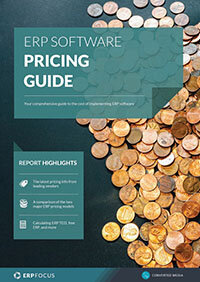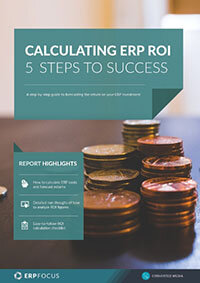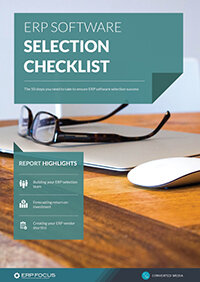ERP software pricing models explained
In the case of ERP pricing models, any cost consideration can offer a daunting challenge whether it’s a first systems purchase, an active operational upgrade, or a holistic migration from one platform to another. In order to ensure that effective value formulas are applied, consider a purchase that reflects the scale of an enterprise first. Especially when you consider that less is more - particularly in the case of small business technology.
For example, consider a small operator offering even a reasonable IT service, cost and capability must be considered to be highly-critical decision elements, as any move made can have a direct impact on daily financial operations. On the other hand, consider the technologies manager at a mid or large-scale company, while any ERP cost estimation should always be considered carefully, the sheer size of the enterprise's resources tend to mask less-than-efficient cost decision-making, although these hidden impacts may create larger problems downstream.
Nevertheless, in today’s typical ERP purchase landscape, there are two typically accepted models to choose from. These include; local server-centric, often known as on-premise systems (OPS), and the software as a service model (SaaS), more colloquially referred to as cloud-based. Each model offers advantages and disadvantages; however, a consideration of enterprise scale should again apply at the outset of any business deliberation. Please bear in mind that there are also hybridized legacy client/server/web-based ERP price models available, however, for the purposes of this article, simplicity would appear to be the best course of action.
ERP licensing
For a host of reasons, small businesses utilizing local server ERP licenses averaging $20k, plus infrastructure costs, can make the most sense, since either way any initial purchase outlay can usually be recovered quickly, and once paid for, further downstream out-of-pocket monies can be freed up for use elsewhere. This approach is most efficient for businesses that manage and operate their own small peer-transaction networks like ERP managed point-of-sale systems (POS) for small grocery or convenience stores.
In this case, simple transactions can pass directly from one or more of the store’s POS terminal(s) to a locally-hosted server, while avoiding any requirement to interface with any other larger network. However, in this scenario, the primary disadvantage of this ERP pricing model will be limited growth, since the enterprise will have to add more infrastructure to keep up with growth beyond its initial configuration. The initial outlay can also be a stumbling block for small businesses with limited free capital.
ERP SaaS subscription
For mid-sized or large-scale private/public companies (using $20m as a typical initial cost baseline), SaaS or cloud-based ERP implementation provides a particularly good value. In this case, a mid-sized license purchase averaging $40k, plus infrastructure, can allow an enterprise to recover its hard costs in as little as two business years, while essentially leaving only monthly licensing costs to deal with going forward. This is particularly advantageous if an enterprise needs to expand quickly to accommodate more resource processing sooner, such as one might experience with a cluster of new contracts. This potential for growth also makes SaaS subscription ERP pricing models attractive to smaller businesses looking to expand.
On the downside, speed of growth breeds complexity that can lead to potential resource cost spikes driven by rapid and consequent growth. The impact is simple, while the system itself may be efficiently paid for, managing any new activity typically requires more well-trained people doing more things on the system; and to a point, good people clearly aren’t cheap by any means.
Open-source ERP
It's worth briefly mentioning the prevalence of open-source ERP entering the market. Whilst this is certainly a route to consider for a small business, or even enterprises with a strong IT team to support the system implementation: there is no such thing as a 'free' lunch. Even open-source ERP will come with a cost, whether that be limited-functionality, paying for extra features, user training, system support functions, and/or maintenance. When considering systems that have no system purchase price, at least initially, ensure you also factor in your total cost of ownership into the equation.
To conclude, the differences between each ERP pricing model are primarily driven by scale first, followed by cost metrics associated with outlay for licensing and hard infrastructure development. Downstream of the initial implementation costs other internal IT and ERP management calculations apply as well, but we can leave those topics for another time.
Free white paper

ERP Software Pricing Guide
Get the latest pricing information on over 80 popular ERP systems, and learn how to budget for your ERP project in our free guide

Featured white papers
-

ERP Software Pricing Guide
Get the latest pricing information on over 80 popular ERP systems, and learn how to budget for your ERP project in our free guide
Download -

Calculating ERP ROI: 5 steps to success
Calculate your new ERP's financial benefits with this comprehensive guide
Download -

60-Step ERP Selection Checklist
Get the comprehensive checklist for your ERP selection project
Download
Related articles
-

The best ERP systems for process manufacturing
Consider these ERP systems when selecting your next process manufacturing ERP
-

CMMC Compliance: What Aerospace and Defense Manufacturers Need to Know
Key insights on CMMC compliance, deadlines, and securing DoD contracts with CMMC 2.0 certificatio...
-

A complete ERP RFP template & guide (includes free template)
All you need to know construct a foolproof ERP RFP, including a customizable template

